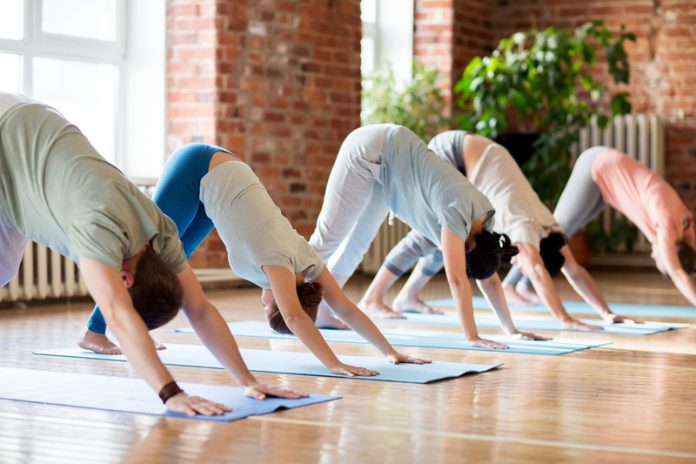Cheryl Hersey from Action PR explains how local councils can make the most of their community leisure centre through investment and marketing
There was a time when a leisure centre refurbishment meant updating the gym equipment and giving the space a fresh coat of paint. With the standard of leisure provision rising across local authorities throughout the UK, operators are becoming more exacting, looking for leisure solutions which drive revenue across all aspects of the facility. We look at how leisure centre operators and their local authority partners are approaching leisure development to ensure all corners of the facility are driving income, even in the most unusual spaces.
Approaching a redevelopment project
Before any redevelopment work can begin, time and effort need to be spent on market research. “Our approach involves us reviewing a council’s wider initiatives and objectives alongside carrying out full latent demand research to ensure there’s the need for our proposed redevelopment,” says Aron Nassim, Director of Projects at the Pulse Group, who have worked on more than 100 projects for dozens of local authorities over the last 35 years. “We work with local authorities closely, to understand the needs of their customers and undertake full market research within an area. This holistic view involves considering the council’s objectives, local need, resident demographics, customer expectations, local competition and latent demand, to create the best possible, innovative development proposals.”
“We are constantly assessing the centres we operate with a view to improving leisure provision and customer experience while increasing profitability,” says Duncan Jefford, Regional Director of Everyone Active who manage more than 150 centres on behalf of 46 local authorities.
“We look at the turnover, participation, and profit of all aspects of our centres. We calculate the percentage of space a facility takes up versus the percentage of turnover to assess viability. Once we’ve identified an opportunity for redevelopment, the first thing we consider is an enhancement to the gym, as in most cases, creating a bigger gym is a foolproof way to drive more revenue.”
Where there is no opportunity or requirement to develop gym facilities, Everyone Active consider redevelopment in four key areas; hot yoga, bouldering, spa and soft play. “We’re also constantly looking at activity and wellness trends to see what new facilities might be worth considering,” says Jefford. “Our decision will be based on local need, nearby competition, as well as the demographics and socio-economic status of the community.”
“At Westway Sport and Fitness Centre we created a mezzanine floor, making the most of a high ceiling and previously unused space, which allowed us to double our climbing and bouldering provision. Bouldering tends to be more profitable than rock climbing, it takes up less space and it’s a non-supervised activity which is more accessible to beginners. While at Marshall Street Leisure Centre in London we converted a small meeting room, a large storage cupboard and low usage corridor into a hot yoga studio, increasing the turnover of the area from zero to £100k a year.”
The sports hall dilemma
In recent years, sports halls have often been singled out as the first facilities ripe for redevelopment due to dwindling usage and revenue potential per sqm. “We are active supporters of grassroots sports and strive to create more opportunities for sports participation, from hockey to netball, but sometimes there will still be a solid business case for redeveloping a sports hall,” says Jefford. “In some instances, a sports hall can make up 20% of the overall space of a facility but only generate 2% of the profit,” he explains.
At Jesmond Sports Centre in Aberdeen, Pulse converted the sports hall into a two-story 70 station gym complete with a free weights area and mezzanine floor. As part of the reconfiguration, they also created an immersive spin studio and a new aerobics studio as well as new changing rooms. The project has been hailed as a resounding success. Since officially opening in January this year, memberships at Jesmond Sports Centre have increased by 465% as a direct result of the investment and overall participation levels in the local area have increased by 7%.
Squash courts can represent another prime area for redevelopment as they typically accommodate two people in a large area. At Fareham Leisure Centre, Everyone Active converted one squash court into a personal training gym and spinning studio by building a mezzanine floor. “The addition of a mezzanine floor to the space can create around 100sqm,” says Jefford. “At Mid Suffolk Leisure Centre we transformed two courts into a state-of-the-art climbing facility featuring 300 sqm of wall space including bouldering walls. At Harrow Leisure Centre, we redeveloped three squash courts to create a special population gym, this has made a huge difference to the local Muslim community who are now able to access women’s only sessions.”
Balancing profits with provision
“It’s not just about removing facilities which don’t make money,” reassures Jefford. “We work hard to create a facility mix which best serves the needs of the community whilst ensuring the centre is futureproof from a self-financing perspective. Before we change anything about a centre we will always look at how we can accommodate the users of a certain area in other aspects of the facility. We take all customer feedback into consideration before we make the decision to redevelop a facility.”
For example, the Youth Gym at Westminster Lodge Leisure Centre in St Albans didn’t get used regularly because the teenagers for whom it was built, wanted to be in the main gym. We converted the space into a hot yoga studio, which has got far more people active, but we also looked at the programming in the gym, adding more U16 sessions and activities to ensure our teenagers were still catered for.”
Phased development
For Nassim and Pulse, the key to successful redevelopment is less about piecemeal changes and more down to creating a broader, longer-term strategy. “When approaching a redevelopment, typically we don’t just look at an individual site or part of facility. We take a strategic approach assessing a local authority’s entire leisure stock,” says Nassim. This approach is known as strategic leisure development (SLD). According to Nassim, more local authorities are beginning to procure for an SLD partner who can support them over a period of several years. “SLD looks collectively at the performance of the entire leisure portfolio with the aim of dealing with current and future liabilities,” he explains.
Taking a phased approach to a redevelopment project can be a smart way to modernise a leisure centre, particularly for cash-strapped councils. “We were appointed by Waveney District Council to redevelop Waterlane Leisure Centre in Lowestoft,” says Nassim. “The first phase involved an investment of £8m to turn a dilapidated facility into a state-of-the-art leisure centre. We remodelled the existing site and added a further 50% to the square footage. The redevelopment included a new gym, learner swimming pool and state of the art spa facility. Two squash courts were converted into a children’s soft play area with a large café. The success of this first phase quickly created an operating surplus which made a second redevelopment possible. A further £2m was invested to increase the size of the gym by 50%, using Pulse’s trademark keyhole staircase, taking it to 150 stations located over two floors. The entire redevelopment also generated enough funds for us to reinvest the money into the redevelopment of another site in the borough, Bungay Pool & Gym.”
It’s clear that local authority leisure provision, far from standing still, is actively chasing the private sector with a model that’s more commercially driven than ever. Whatever the approach, councils should consider their next redevelopment project carefully with an open mind and high expectations. When it comes to creating a future-proof leisure centre, it seems almost anything is possible.
Cheryl Hersey
Action PR Ltd






![Europe’s housing crisis: A fundamental social right under pressure Run-down appartment building in southeast Europe set before a moody evening sky. High dynamic range photo. Please see my related collections... [url=search/lightbox/7431206][img]http://i161.photobucket.com/albums/t218/dave9296/Lightbox_Vetta.jpg[/img][/url]](https://www.openaccessgovernment.org/wp-content/uploads/2025/04/iStock-108309610-218x150.jpg)




